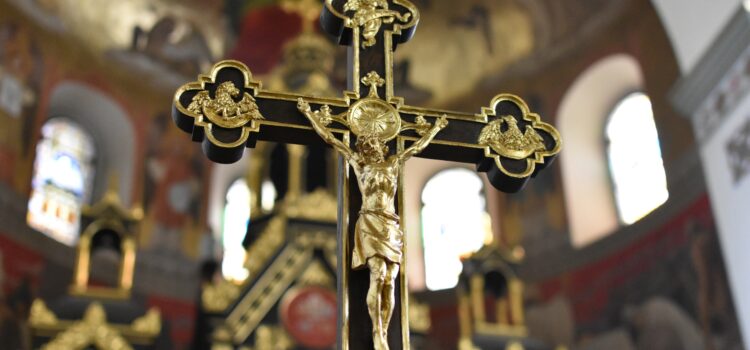

This article is an excerpt from the Shortform summary of "The Case for Christ" by Lee Strobel. Shortform has the world's best summaries of books you should be reading.
Like this article? Sign up for a free trial here .
Who is Mary Magdalene in the Bible, and what was her role? Was Mary Magdalene in the Bible a reliable witness to the resurrection?
Mary Magdalene was a disciple of Jesus and is known for being a witness to the resurrection. She has often been discredited as a witness and as a follower of Jesus, but Strobel argues that she provides a reliable account.
Read more about Saint Mary Magdalene in the Bible, and why Christian scholars view her as a reliable source.
Mary Magdalene in the Bible: Discrepancies
Naturally, there are some differences among the gospels regarding Jesus’s empty tomb—differences which skeptics have latched onto to call the entire Resurrection into question.
For example, in Matthew, Mary and Mary Magdalene in the Bible arrive at the tomb at dawn and an angel opens the tomb for them; in Mark, the women arrive at sunrise and the tomb is already open; and in Luke, the women arrive at dawn to find the tomb already open. There also discrepancies regarding who arrives at the tomb (Is it just Mary and Mary Magdalene in the Bible, or are Salome and Joanna there, too?) and who’s in the tomb when they arrive (in Mark, a “youth” is inside; in Luke, it’s “two men”).
When one focuses on these minor details, however, one risks losing the forest for the trees. In other words, the gospels are remarkably consistent with regard to the major events of the Resurrection: Joseph of Arimathea’s handling of Jesus’s body and its entombment; the arrival of some group of women at the tomb Sunday morning; the tomb’s emptiness; and the vision of angels reporting that Jesus has risen. The core of the story is consistent across the gospels, and so it’s better scholarly practice to trust those consistencies rather than dismiss them. In fact, if the gospels aligned perfectly in all their details, they would (counterintuitively) be less trustworthy: One would suspect that the gospel writers had colluded to get their story straight.
The immateriality of the discrepancies notwithstanding, there are in fact ways to harmonize the gospels’ accounts. For example, all the writers mention that Mary and Saint Mary Magdalene in the Bible arrived at the tomb with other women; some writers simply chose to mention some of the women by name whereas others didn’t.
The Witnesses
As noted, the witnesses to Jesus’s empty tomb were a group of women sympathetic to him—isn’t it possible they fabricated their account?
What this objection fails to take into consideration is the position of women in first-century Jewish society. At the time, women were very much second-class citizens; in fact, they weren’t even allowed to testify in Jewish courts of law! If the gospel authors wanted to fabricate witnesses to the empty tomb, it’s likely they would have had one of Jesus’s male disciples (Peter or John, perhaps) go to the tomb on Easter Sunday. That all four gospels portray women bearing witness to Christ’s resurrection is a testament to the account’s veracity.
But why were the women there in the first place? If they knew the tomb was sealed, why would they go to anoint a body they knew they wouldn’t be able to access?
Simply put, they loved Jesus deeply and were in deep mourning. They likely visited his tomb in the desperate hope that, somehow, they would be able to anoint his body.
The Positive Evidence
In addition to the rebuttals outlined above, there is a wealth of affirmative evidence that the tomb was empty.
- The empty tomb is implicit in the preaching of Paul in 1 Corinthians 15, one of the earliest sources of Jesus’s life.
- Both Christians and Jews of the first century knew where Jesus’s tomb was. If that (historical, really existing) tomb hadn’t been empty, no religious movement would’ve sprung up around Jesus’s Resurrection (because skeptics could just go to the tomb and see that he was still buried there).
- Mark likely derived his empty tomb story from an earlier source, one possibly written before 37 AD. It’s improbable that an account written so soon after Jesus’s death would have been embellished by legend.
- Mark’s account is relatively “dry” in comparison to the floral and fantastic accounts of the tomb written in the second century. The simplicity of Mark’s telling implies its credibility.
- The fact that the empty tomb was discovered by women, a fact testified to by all the gospels, suggests the account’s authenticity. (If the gospel authors wanted to fabricate a story about Jesus’s empty tomb, they would have used male witnesses.)
- The earliest Jewish arguments against the truth of the Resurrection presume the fact of the empty tomb. In the first century, Jews and Christians alike accepted that the tomb was empty.
Mary Magdalene in the Bible: The Question of the First Witness
Another discrepancy between Paul’s creed and the gospel accounts concerns the person to whom Jesus first presented himself: in 1 Corinthians, it’s Peter; in John, it’s Mary Magdalene in the Bible. Don’t these contradictions hurt Paul’s credibility?
They do not, because there may not even be a discrepancy. The creed actually never says that Jesus appeared first to Peter; rather, it says that Jesus appeared to a number of people and simply lists Peter first. That is to say, he might have appeared to Mary Magdalene in the Bible first, but for contextual or cultural reasons—for example, the inadmissibility of women’s testimony in Jewish law—Paul decided to omit the specific female witnesses.
The Four Gospels and Acts
Of course, 1 Corinthians 15 isn’t the only place in the New Testament where Jesus’s reappearance is described; his appearance to an array of people both named and unnamed is reported in the four gospels and Acts as well. In fact, the gospels and Acts tell us that Jesus appeared to over a dozen individuals, including Saint Mary Magdalene (John 20:10), Cleopas and another disciple (Luke 24:13), and a variety of the apostles (John 20:19, John 20:26, and Acts 1:4). And several sightings appear in multiple books: for example, both Luke 24:50 and Acts 1:4 describe Jesus as having been with the apostles just before His ascension.
It’s especially noteworthy that Acts in particular features detailed accounts of Jesus’s reappearance. Acts, like Paul’s letters, comprises quite early Church material and so is unlikely to have been embellished by legend. And it features the testimony of the witnesses themselves, for example, Peter’s description of eating and drinking with Jesus after he rose from the dead (Acts 10:41). Given the fact that these followers of Jesus would risk their lives—and, in some cases, give their lives—to worship him, it is highly unlikely they would base their devotion on a canard.

———End of Preview———
Like what you just read? Read the rest of the world's best summary of Lee Strobel's "The Case for Christ" at Shortform .
Here's what you'll find in our full The Case for Christ summary :
- How an atheist lawyer-journalist researched Christ and began believing
- The key arguments against the existence of Christ, and why they don't hold up
- How to make up your own mind about whether Christ existed






